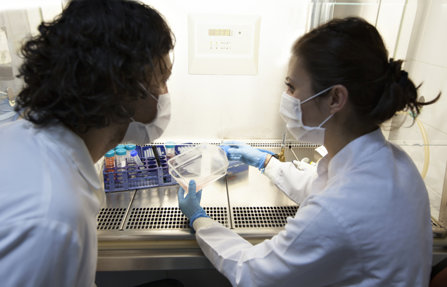Efforts Towards Harm Reduction Overshadow Efforts Towards Treating Addiction in Switzerland

Given that Switzerland experienced a slight decline in overdose fatalities during the mid-2000s, the country is sometimes hailed in the media as having an effective approach to addiction. But is that true? Closer investigation reveals that Switzerland is implementing harm reduction programs to help addicts stay alive instead of implementing treatment programs to help addicts get off drugs.
In short, Switzerland may be implementing programs that slow down the rate of fatal drug overdoses across the nation. But in reality, the country is only delaying the inevitable by not treating those who are addicted to drugs.
Harm Reduction Techniques Utilized in Switzerland
Harm reduction is a public health term defined as any program implemented to reduce the inherent harm in something related to public health. In the case of drug addiction, harm reduction techniques would be programs that allege to make drug use less dangerous. While everyone wants fewer addicts to die from drugs, harm reduction fails because these programs do not ultimately help drug users stop using drugs.
For the last 25 years, Switzerland has applied a ‘four pillars’ policy, a program that focuses on prevention, therapy, harm reduction, and law enforcement. Swiss health officials have relied more and more heavily on the harm reduction pillar rather than utilizing all four pillars equally to tackle the country’s addiction problem. The result? Harm reduction techniques have taken center stage in this country, taking prominence even over Swiss efforts to help addicts get off of drugs completely.

Some of the harm reduction techniques utilized in Switzerland include:
- Controlled Medical Distribution of Heroin. About two decades ago, Switzerland launched several specialized centers that deliver daily doses of heroin to addicts. The idea behind these sites was to allow addicts to receive and ingest drugs under the supervision of a medical team, supposedly making drug use safer. The problem is, such programs enable addicts to continue being addicted rather than insisting they receive treatment for their addiction. It simply delays and extends the problem, as opposed to solving it through treatment.
- Syringe Exchange Programs. To slow the spread of HIV and other infectious diseases, Swiss health officials implemented syringe exchange programs. These programs enable addicts to safely dispose of used needles and pick up new, unused needles for free.
- Substitution Therapy (Medication-Assisted Treatment). Another approach in Switzerland was to implement Medication-Assisted Treatment, similar to programs utilized in other parts of Europe and the United States. According to one report, “The four pillars law also expanded opioid substitution therapy (or medication-assisted treatment) and lowered the threshold for entry. Someone can walk into a clinic for the first time and start treatment 20 minutes later.” The idea here was to put addicts on drugs that could be more easily supervised, as opposed to addicts using heroin from the street.
But Harm Reduction Does Go Far Enough
Switzerland is right to put individual addicts, not the drugs they use, at the center of the conversation about drug addiction. The country’s leaders are right to move away from immense criminalization and penalization of drug use and to move more towards trying to help addicts. And certainly, harm reduction techniques are more helpful to addicts than simply locking them up in prison. However, if the Swiss government and Swiss residents do not insist that addicts receive addiction treatment, the addiction problem will persist. The key area in which harm reduction fails is that it does not help addicts get off drugs. It simply tries to prevent addicts from dying.
Drug Use Statistics; Addiction Still a Serious Problem in Switzerland
The Drug Policy Facts organization has collected a wealth of information on drug use statistics across Europe. Their findings reflect the scope of drug use in Switzerland as follows:
In Switzerland, approximately 20% of the population over the age of 15 have consumed cannabis, while 2.8% of the population has used cocaine and 1.8% has used ecstasy. These percentages reflect a slight increase over recent years.
According to the data, very few Swiss residents who are addicted to drugs only consume one type of drug. Most addicts use multiple drugs at the same time or close together, such as heroin and cocaine.

Though Switzerland was experiencing a drop in total drug overdose fatalities during the early-2000s (likely the result of the harm reduction methods mentioned earlier), this drop has since halted, with annual drug fatalities remaining about the same one year to the next, sometimes increasing.
Currently, tens of thousands of Swiss residents are addicted to heroin, and hundreds still die from the drug every year, despite increasing harm reduction efforts.
Adolescent drug use is also a problem in Switzerland, with about 11.5% of young men using cannabis and about 5.1% of young women using cannabis.
Heroin addiction is still a serious problem in Switzerland. In the mid-1990s, this country may have had the worst heroin problem in Europe. The number of heroin addicts in Switzerland has dropped somewhat since the 1990s, but when Switzerland shifted to harm reduction as the main approach for addressing addiction in the 2000s, the number of heroin addicts leveled off at about 23,000 addicts and has remained at that level since.
Prior to more recent efforts towards decriminalization, Switzerland had also implemented one of the most intense crackdowns on drug possession in all of the western world. According to the data, Switzerland made more arrests (per capita) for possession of cannabis than even the United States. However, a relatively small percentage of those arrests ever led to convictions.
While the Drug Policy Facts organization has chronicled quite a bit of information on drug trends in Switzerland, other sources for further study include the Swiss Federal Office of Public Health, The Lancet, and Peter Reuter’s and Domenic Schnoz’s scholarly works on the subject.
Addiction Treatment; Helping Swiss Addicts Break Free from Drugs for Life
Rather than investing so much time, effort, and money in techniques that purport to make drug abuse less dangerous, Switzerland needs to focus more on treating addicts, helping them overcome addiction permanently. This would be a far more effective and lasting solution than merely trying to make drug use “less dangerous.”
Swiss families should not be so quick to place their faith in harm reduction as a workable approach because harm reduction never fully solves the problem of addiction. Qualified treatment at a residential drug rehab, on the other hand, does.
If you or someone you care about is struggling with an addiction to drugs or alcohol, please do not assume that harm reduction techniques will create a better situation for you or your loved one. It would be far better to banish addiction from one’s life entirely than have to “manage” addiction for eternity. A treatment center can help you or your loved one overcome addiction for good.
Please get in touch with a qualified drug rehab center today, and get rid of addiction for life.
Sources:
- https://www.swissinfo.ch/eng/focus-page-drugs-policy_how-far-is-switzerland-willing-to-go-when-it-comes-to-decriminalising-drugs-/45810320
- https://ssir.org/articles/entry/inside_switzerlands_radical_drug_policy_innovation
- https://www.northcarolinahealthnews.org/2019/01/21/switzerland-couldnt-stop-drug-users-so-it-started-supporting-them/
- https://www.drugpolicyfacts.org/region/switzerland
- https://www.drugpolicyfacts.org/sites/default/files/BAG_Leitbild_A4_e.pdf
- https://www.thelancet.com/journals/lancet/article/PIIS0140-6736(06)68804-1/fulltext
- https://citeseerx.ist.psu.edu/viewdoc/download?doi=10.1.1.177.5241&rep=rep1&type=pdf


